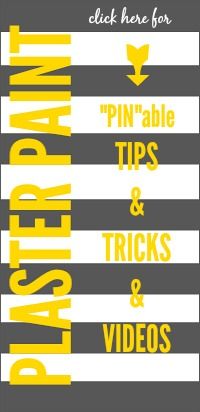Here is what we started with.
Too many projects were finished on this table top instead of dinners.
I have tried several different sealers but the one I keep coming back to is Citristrip. It's easy to use, does the job plus I can use it inside the house without worrying about terrible fumes because it smells like oranges.
Lots of details below, but I've included lots of pictures after.
- plastic gloves
- plastic scraper
- Citristrip
- lots of paper towels
- small disposable box or bowl
- floor covering
- large chip brush
First off I covered our wood floor with a large sheet of thick paper. You can buy this in rolls at Home Depot & Lowe's. I divided the table in 4 sections, for me it was easier to work with a small section at a time but you could do it however you like. Here are my steps:
- Safety first. Gloves/googles/apron on and ready to get dirty. Pour/dab Citristrip on the section then I would spread it/paint it on with my chip brush. Not too thick. You can see in the above picture the size of my section and how much Citristrip I used.
- I gave it about 15 minutes to "work" before I started using my plastic scraper to remove all the gunk. What I have found works best for me is to begin at one end and scrap in one long stroke to the other end. Lift off the goo and dump it in my box. Keep a paper towel in one hand to wipe off your scraper with each pass.
**This first pass will remove a lot but I always do at least two rounds of stripper, sometimes more depending on the layer of funky gunk you are removing.**
I didn't even bother with the trim area of the table yet, right now I was only working on the table top. I moved through all 4 sections of the table before moving onto the second stripping. Here are my steps for the second stripping:
- This layer can be thinner than the first if it looks like this will be your final stripping, if not then I would put on as much as I did the first time. This time my sections are the entire length of the table so that I can do one long pass so I don't leave any junk in the middle of the table. If this is your final pass you should remove nearly every bit of goo and Citristrip with you scraper, then I would use paper towels to wipe off all traces of Citristrip so you see pretty "dry" wood grain.
**Tip: Don't let your Citristrip dry on your surface. The key to this all going smoothly and easily is if your working with a wet surface.
- Work your way across your table in section sizes that you are comfortable with.
- Once you have worked your way across the table top then wipe off the entire table with your paper towels and make sure you don't have any "sticky" areas. If you do, simply dab a small amount of Citristrip on it, wait a minute and wipe it all off.
- Finally, follow the above steps for your decorative sides. I also used a small toothbrush to get the stripper in the groves.
I used two rolls of paper towels and filled an entire small shipping box with junk by the time I was done. The process does take patience and a lot of elbow grease but the end result is totally worth it.
My table had paint splatters & sealer drips from past projects but look at it now. Still have a tiny bit of goo in the crevices of the trim but not too much. Sorry for the picture quality -- my camera phone.
Citristrip is pretty amazing stuff in my book. It took years off of our dining table.
See where the toothbrush came in handy? This is where it got a little "sticky". At this point I would just dab a little stripper back on, wait a minute or two then I was able to wipe it off with paper towels.
After the table was completely stripped I let is sit for 24 hours to completely dry. Not sure if that is necessary but I was tired so it sat. The next morning I decided I wanted a grain sack stripe down the middle.
Eddie found the center of the table for me, we used Frog tape to layout our design then I filled it in with Ivory Lace Plaster Paint.
We pulled off the tape while the paint was still damp and then let it sit to dry. I distressed it and glazed it in a light natural hue. Here is what our table looked like when we were done.
So much better & completely ready for Easter dinner.
HAPPY STRIPPING!






























No comments:
Post a Comment
I love getting comments, they make my day and I read each one! So, thank you very much for taking the time to leave one!